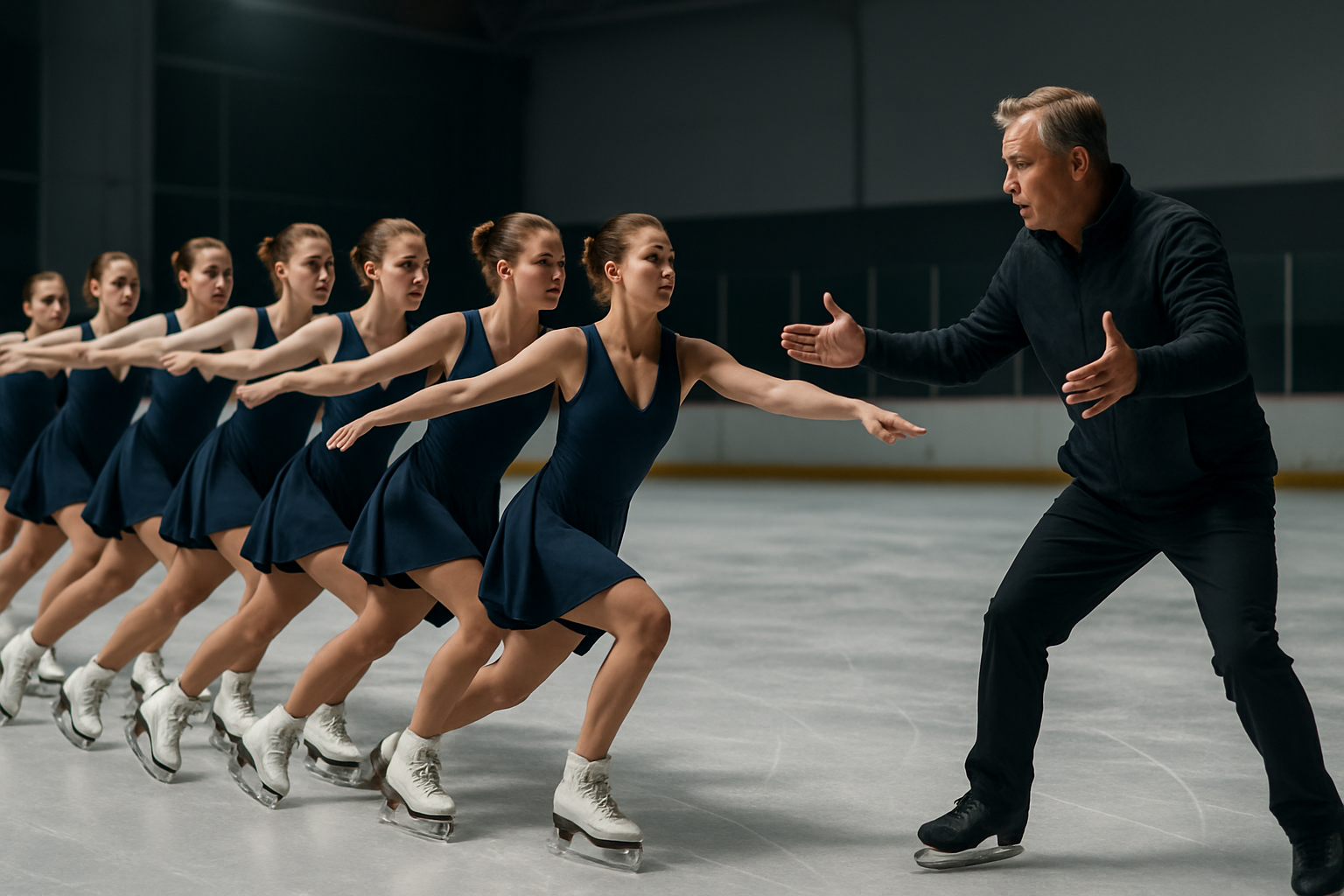Decoding the Dynamics of Competitive Speedcubing
In the vibrant world of mind sports, a captivating phenomenon has emerged, challenging the limits of human cognition and dexterity. Competitive speedcubing, the art of solving Rubik's Cubes and similar twisty puzzles at breakneck speeds, has evolved from a niche hobby into a global sport that demands lightning-fast reflexes, pattern recognition, and strategic thinking. This article delves into the intricate world of speedcubing, exploring its history, techniques, and the science behind this mesmerizing pursuit.

The Birth of a Mind Sport
The journey of speedcubing begins with the invention of the Rubik’s Cube itself. In 1974, Hungarian architecture professor Ernő Rubik created the iconic 3x3x3 puzzle as a teaching tool to help his students understand three-dimensional problems. Little did he know that his creation would spark a global phenomenon and eventually give rise to a competitive sport.
Initially, solving the Rubik’s Cube was considered a daunting task, with early solution methods taking hours or even days. However, as the puzzle gained popularity in the 1980s, enthusiasts began developing more efficient solving techniques. The first official speedcubing competition was held in Budapest, Hungary, in 1982, marking the birth of competitive speedcubing.
As solving methods improved and word spread, informal competitions began popping up around the world. The sport gained momentum in the late 1990s and early 2000s with the advent of the internet, allowing cubers to share techniques and organize events more easily. In 2003, the World Cube Association (WCA) was established, providing a standardized framework for official competitions and records.
The Science of Speed
At its core, speedcubing is a test of cognitive processing speed, pattern recognition, and muscle memory. Neuroscientists and psychologists have taken interest in the sport, studying how speedcubers’ brains differ from those of non-cubers and how the practice of speedcubing affects cognitive development.
Research has shown that speedcubers exhibit enhanced visual-spatial processing abilities and working memory capacity. When solving a cube, they engage in a complex interplay of mental processes, including:
-
Pattern recognition: Quickly identifying the current state of the cube and recognizing familiar patterns.
-
Problem-solving: Determining the most efficient sequence of moves to reach the solved state.
-
Spatial reasoning: Mentally rotating and manipulating the cube to plan ahead.
-
Motor planning: Coordinating hand movements to execute solutions rapidly.
Studies using functional magnetic resonance imaging (fMRI) have revealed that experienced speedcubers show increased activation in brain regions associated with visual processing, motor control, and decision-making when solving cubes. This suggests that regular practice leads to structural and functional changes in the brain, optimizing it for rapid problem-solving and execution.
Moreover, the act of speedcubing engages both hemispheres of the brain simultaneously. The left hemisphere, typically associated with logical and sequential thinking, works in tandem with the right hemisphere, which handles spatial relationships and pattern recognition. This whole-brain engagement is believed to contribute to the cognitive benefits observed in speedcubers, including improved memory, concentration, and problem-solving skills.
Techniques and Strategies
The world of competitive speedcubing is rich with various solving methods and techniques, each designed to minimize the number of moves and maximize efficiency. While beginners often start with the layer-by-layer method, advanced speedcubers employ more sophisticated approaches:
-
CFOP (Cross, F2L, OLL, PLL): Also known as the Fridrich method, this is the most widely used advanced technique. It involves solving the cube in four distinct steps:
-
Creating a cross on one face
-
Solving the first two layers simultaneously (F2L)
-
Orienting the last layer (OLL)
-
Permuting the last layer (PLL)
-
-
Roux: This method focuses on building blocks and solving the cube using intuitive moves rather than memorized algorithms. It’s known for its efficiency in move count.
-
ZZ: A method that emphasizes solving the cube while keeping it oriented, reducing the need for cube rotations during solving.
-
Petrus: This approach begins by building a 2x2x2 block and expanding it, focusing on efficient block-building.
Each method has its strengths and adherents, and top speedcubers often customize their approach by incorporating elements from multiple methods.
Beyond solving methods, speedcubers employ various strategies to shave precious milliseconds off their times:
-
Look-ahead: The ability to plan several moves in advance while executing the current step.
-
Finger tricks: Specialized hand movements that allow for faster and more efficient turning of the cube.
-
Algorithm optimization: Customizing and refining standard algorithms to suit individual solving styles and hand sizes.
-
Recognition training: Developing the ability to quickly identify cube states and required algorithms without hesitation.
The Competitive Landscape
Competitive speedcubing has grown into a global sport with a vibrant community and a structured competitive framework. The World Cube Association oversees official competitions worldwide, ensuring standardized rules and fair play.
Competitions typically feature multiple events, including:
-
3x3x3 Cube: The flagship event, solving the standard Rubik’s Cube.
-
2x2x2 Cube: A simpler puzzle that tests extreme speed and efficiency.
-
4x4x4 and larger cubes: Challenging events that require advanced problem-solving skills.
-
One-handed solving: Testing dexterity and specialized techniques.
-
Blindfolded solving: An impressive feat of memorization and spatial awareness.
-
Fewest moves: Solving the cube in the least number of moves rather than the fastest time.
In official competitions, solves are timed using specialized timers that measure to the hundredth of a second. Competitors typically perform five solves, with the best and worst times discarded, and the average of the remaining three determines the final result.
The current world record for solving a 3x3x3 cube stands at an astonishing 3.47 seconds, set by Yusheng Du of China in 2018. This mind-boggling speed demonstrates the incredible levels of skill and efficiency that top speedcubers have achieved through years of dedicated practice and refinement of techniques.
The Global Speedcubing Community
One of the most remarkable aspects of competitive speedcubing is the vibrant and supportive global community that has formed around the sport. This community extends far beyond competition venues, thriving in online forums, social media groups, and video-sharing platforms.
Online platforms play a crucial role in the speedcubing world:
-
Speedsolving.com: A popular forum where cubers of all levels discuss techniques, share accomplishments, and organize unofficial competitions.
-
YouTube: Many speedcubers maintain channels where they post solve videos, tutorials, and competition reports. These videos serve as both entertainment and educational resources for the community.
-
Twitch: Live streaming platforms have become increasingly popular for speedcubers to showcase their skills in real-time and interact with fans.
-
Discord: Many cubing communities use Discord servers for real-time chat, virtual competitions, and collaboration on new solving methods.
The speedcubing community is known for its inclusivity and supportive nature. Experienced cubers often mentor newcomers, sharing tips and encouragement. This collaborative spirit has been instrumental in advancing solving techniques and pushing the boundaries of what’s possible in the sport.
Moreover, the community has developed its own unique culture and lexicon. Terms like “PLL skip” (when the final step of solving is unnecessary due to luck), “DNF” (Did Not Finish), and “sub-X” (achieving a solve time below X seconds) are common in cubing conversations.
The Technological Evolution of Speedcubing
Technology has played a significant role in the evolution of speedcubing, both in terms of the puzzles themselves and the tools used for practice and competition.
- Cube Design:
Modern speedcubes are a far cry from the original Rubik’s Cube. Manufacturers like GAN, MoYu, and QiYi have developed cubes specifically designed for speed:
-
Improved internal mechanisms for smoother turning
-
Magnetic systems for better stability and tactile feedback
-
Customizable tension and spring compression
-
Specialized lubrication to reduce friction
These advancements have allowed for faster solving times and reduced physical strain during long practice sessions.
-
Timing and Scrambling:
-
Competition-grade timers with precision to 0.01 seconds
-
Automated scrambling machines to ensure consistent and random scrambles
-
Mobile apps and websites for timing and tracking solves during practice
-
-
Training Tools:
-
Cube simulators for practicing without physical cubes
-
Specialized trainer apps for learning and drilling algorithms
-
Video analysis software for studying solve techniques in slow motion
-
-
Augmented Reality (AR) and Virtual Reality (VR):
Emerging technologies are opening new possibilities for speedcubing:
-
AR apps that overlay solving instructions on physical cubes
-
VR environments for simulated competition experiences
-
AI-powered solve analysis for personalized improvement suggestions
These technological advancements have not only improved the competitive aspect of speedcubing but have also made the sport more accessible to newcomers and helped standardize competition conditions worldwide.
The Physical and Mental Demands of Speedcubing
While speedcubing may appear to be primarily a mental exercise, it places significant demands on the body as well. Top speedcubers must maintain physical fitness and take care of their hands to perform at their best.
Physical Aspects:
-
Hand and Finger Strength: Repeated solving requires strong, flexible fingers and hands.
-
Wrist Flexibility: Efficient turning techniques rely on fluid wrist movements.
-
Eye-Hand Coordination: Rapid, precise movements are essential for fast solving.
-
Posture: Maintaining good posture during long solving sessions is crucial for preventing strain.
Many speedcubers incorporate specific exercises into their training regimen:
-
Finger stretches and exercises to improve dexterity and prevent repetitive strain injuries
-
Wrist exercises to enhance flexibility and strength
-
General fitness activities to improve overall stamina and focus
Mental Demands:
Speedcubing is as much a mental sport as it is a physical one. The cognitive challenges include:
-
Intense Concentration: Maintaining focus during solving and throughout competitions.
-
Stress Management: Dealing with the pressure of competition and performing under scrutiny.
-
Pattern Recognition: Quickly identifying and responding to cube states.
-
Memory: Recalling hundreds of algorithms and their applications.
-
Problem-Solving: Adapting to unexpected situations during solves.
To address these mental aspects, many speedcubers incorporate meditation, visualization techniques, and mental rehearsal into their training. Some even work with sports psychologists to develop strategies for managing competition stress and optimizing performance.
The combination of physical and mental demands makes speedcubing a uniquely challenging sport, requiring a holistic approach to training and preparation.
The Educational Impact of Speedcubing
Beyond its competitive aspects, speedcubing has found its way into educational settings, recognized for its potential to develop important cognitive skills and engage students in mathematics and problem-solving.
- Mathematical Concepts:
Speedcubing naturally introduces students to mathematical concepts such as:
-
Group theory and permutations
-
Algorithms and logical sequences
-
Spatial reasoning and geometry
Educators have developed curricula that use the Rubik’s Cube to teach these concepts in an engaging, hands-on manner.
- Problem-Solving Skills:
Learning to solve the cube encourages:
-
Systematic approaches to complex problems
-
Breaking large problems into manageable steps
-
Persistence and resilience in the face of challenges
- Memory and Concentration:
Mastering speedcubing techniques requires:
-
Memorization of algorithms and patterns
-
Sustained focus and attention to detail
- STEM Education:
Speedcubing has been incorporated into STEM (Science, Technology, Engineering, and Mathematics) programs, inspiring students to explore related fields such as:
-
Computer science (through cube-solving algorithms)
-
Mechanical engineering (by studying cube mechanisms)
-
Data analysis (through solve time statistics)
- Social and Emotional Learning:
Participating in speedcubing communities and competitions can foster:
-
Teamwork and collaboration
-
Goal-setting and self-improvement
-
Sportsmanship and respect for others
Schools and educational organizations have recognized these benefits, leading to the creation of speedcubing clubs and the integration of cube-solving into curricula. The You CAN Do The Rubik’s Cube program, for instance, provides resources for educators to use the cube as a teaching tool across various subjects.
By combining elements of play, competition, and intellectual challenge, speedcubing offers a unique avenue for educational engagement, particularly for students who may struggle with traditional learning methods.
The Future of Speedcubing
As competitive speedcubing continues to grow and evolve, several trends and possibilities are shaping its future:
-
Technological Integration:
-
Increased use of AI and machine learning for training and analysis
-
Development of “smart cubes” with built-in sensors for precise move tracking
-
Virtual and augmented reality platforms for remote competitions and training
-
-
Expanding Competitive Formats:
-
Team-based events to promote collaboration and strategy
-
Multi-discipline competitions combining different puzzle types
-
Endurance events testing stamina and consistency over longer periods
-
-
Mainstream Recognition:
-
Potential inclusion in multi-sport events or even the Olympics
-
Increased media coverage and sponsorship opportunities
-
Development of professional leagues and structured competitive circuits
-
-
Educational Integration:
-
Further incorporation of speedcubing into STEM curricula
-
Research into cognitive benefits and potential therapeutic applications
-
Development of adaptive learning tools using speedcubing principles
-
-
Pushing Human Limits:
-
Continued refinement of solving methods and algorithms
-
Exploration of the theoretical limits of human solving speeds
-
Integration of ergonomics and sports science to optimize performance
-
-
Diversification of Puzzles:
-
Innovation in puzzle design, introducing new challenges
-
Competitions featuring a wider variety of twisty puzzles
-
Cross-pollination with other puzzle sports and mind games
-
-
Global Expansion:
-
Growth of competitive scenes in developing countries
-
Increased cultural exchange through international competitions
-
Development of online platforms for global participation and ranking
-
As speedcubing continues to captivate minds and push the boundaries of human cognitive and motor skills, it stands poised to make significant contributions to fields beyond competition, including education, cognitive science, and even artificial intelligence research.
The Enduring Appeal of Speedcubing
Competitive speedcubing represents a unique intersection of mental acuity, physical dexterity, and technological innovation. From its humble beginnings as a solitary puzzle to its current status as a global sport, speedcubing has continually evolved, challenging participants to push the limits of human capability.
The sport’s appeal lies not just in the thrill of competition, but in its capacity to foster cognitive development, build community, and bridge cultural divides. As a pursuit that combines elements of mathematics, physics, and psychology, speedcubing offers a rich field for both scientific study and personal growth.
Looking ahead, the future of speedcubing appears bright and full of potential. As technology advances and our understanding of cognitive processes deepens, we can expect to see continued innovation in solving techniques, training methods, and competitive formats. The sport’s growing popularity and recognition in educational settings suggest that its influence will extend far beyond the competitive arena, potentially reshaping approaches to learning and problem-solving.
For those who have experienced the satisfaction of a well-executed solve or the camaraderie of a cubing competition, the Rubik’s Cube is more than just a puzzle—it’s a gateway to a world of intellectual challenge, community, and endless possibility. As the sport continues to grow and evolve, it will undoubtedly inspire new generations to twist, turn, and push the boundaries of what’s possible, one solve at a time.





